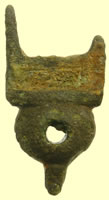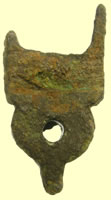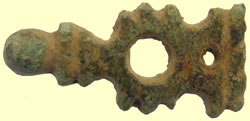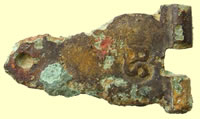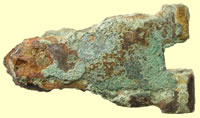A cast copper-alloy book clasp (hook piece) of late Medieval date, probably 14th-15th century.
The clasp is sub-rectangular in plan, with a flaring split end decorated in a feather motif that would attach to a leather strap. The hook is semi-cylindrical
The top of the clasps is decorated with three holes running across the width of the clasp near the base of the feather decoration of the split end. Just off centre of the top of the clasp is a stamped circle and dot motif, with a hollow circle in the centre and raised circumscribing circle set within the clasp plate. A collar runs across the width of the clasp end, and simple incised lines arranged in a chevron shape occur behind the collar. Another rivet is placed between the chevron decoration and the circle and dot decoration.
The underside of the clasp is undecorated
PAS link |
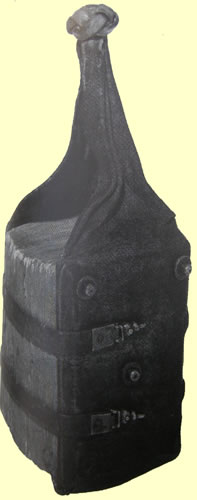
 The distinguishing feature of this book format is its long extension of the leather cover The distinguishing feature of this book format is its long extension of the leather cover
along the lower edge of the book, which allows it to be carried by hand, or be tucked
under the belt, held there by a large knob or hook incorporated into the overhanging
leather. Judging by contemporaneous representations in paintings, sculptures, drawings and in verbal descriptions the majority was made between about 1450 and 1650, mainly in what is now Germany, the Netherlands and England. Only about two dozen still exist, making it a very rare witness to medieval life between six hundred and seven hundred years ago.

|

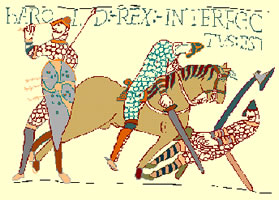
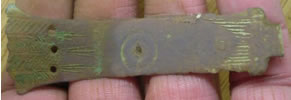
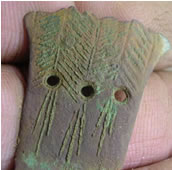

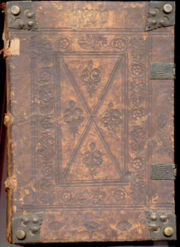
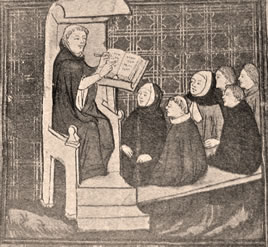
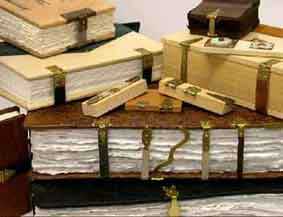

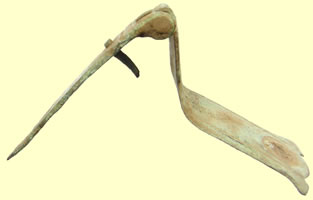








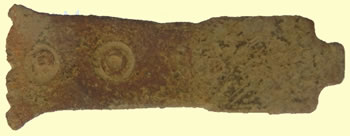
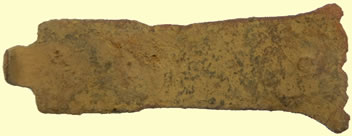








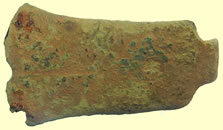

















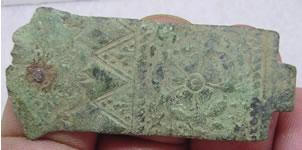



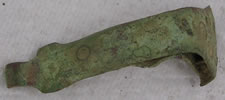



















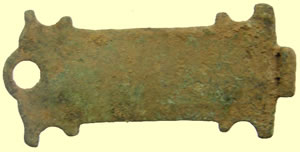


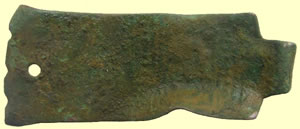




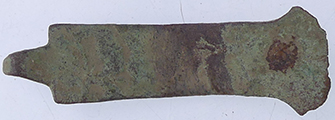
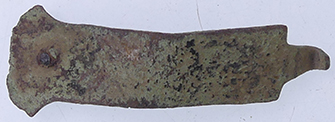
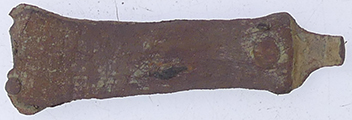
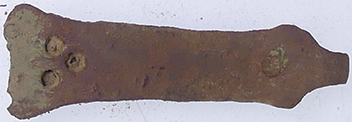

 The distinguishing feature of this book format is its long extension of the leather cover
The distinguishing feature of this book format is its long extension of the leather cover
